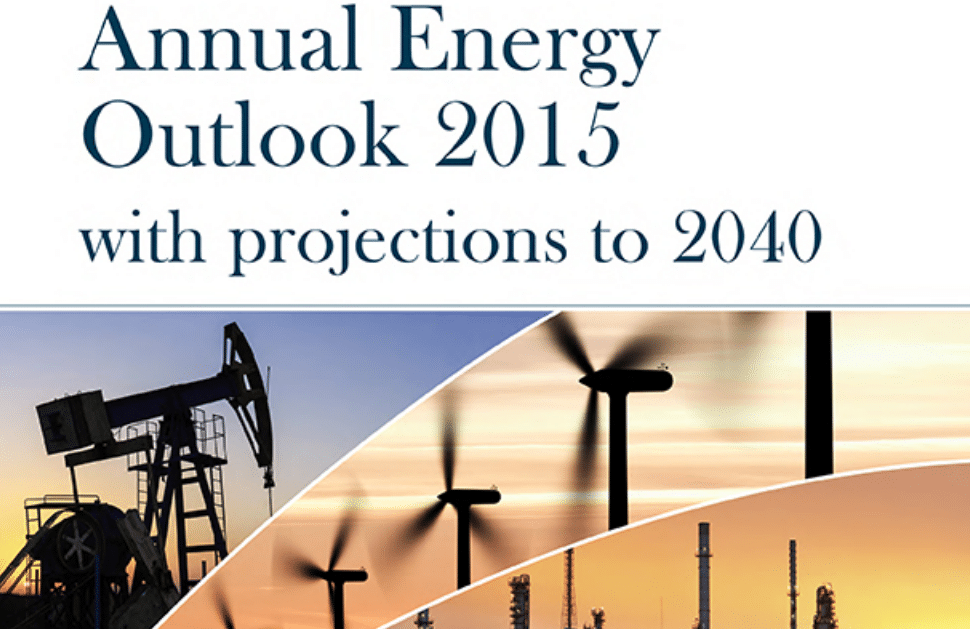Another year, another U.S. Energy Information Agency (EIA) assessment report that makes the agency’s own forecasters look foolish.
In the latest Electric Power Monthly report, which covers all twelve months of 2015, the EIA revealed that renewable energy sources accounted for nearly 13.5-percent of the nation’s utility-scale electrical output. This is up by more than 2-percent over 2014. But get this: less than three months earlier, in the “Short-Term Energy Outlook,” the agency predicted “total renewables used in the electric power sector to decrease by 1.8% in 2015.”
The EIA’s record for long-term forecasts is no better. In fact, it’s consistently worse.
As Ken Bossong, Executive Director of the SUN DAY Campaign, recently pointed out, the agency’s “Annual Energy Outlook 2012” forecast that non-hydro renewables would provide about 250,000 thousand megawatt-hours of electricity by 2015. The new EIA tallies put that figure at over 300,000 thousand megawatt-hours, roughly 20-percent higher than predicted. (You could more simply state this as the 300,000 gigawatt hours actually produced in 2015 is 20-percent higher than the 250,000 gigawatt-hours predicted, but for some reason, the EIA likes to use the clunky “thousand megawatt-hours” factor.)
“Just a few years ago EIA had forecast that renewables might provide 15% of the nation’s electricity by 2035,” said Bossong. “It now appears that goal could be reached within the next two years and quite possibly sooner!”
This isn’t the rare instance of the EIA getting something wrong. Rather, it’s something of an annual tradition. Consider these examples, taken at random (and culled from links I’ve bookmarked over the past few years under the tag, “EIA wrong”):
- “In 2009, the federal government’s Energy Information Administration made a forecast for the next two decades: U.S. wind power would grow modestly, reaching 44 gigawatts of generating capacity in 2030, while solar power would remain scarce, inching up to 12 GW. Just six years later, U.S. wind capacity is already up to 66 GW, and solar has shot up to 21 GW. There’s now enough installed wind and solar to power 25 million American homes— more than three times what the EIA expected before President Obama took office.” Michael Grunwald in Politico
- “In 2005, EIA forecast that U.S. solar power capacity would hit about 1.2 GW in 2013. Where are we right now [in 2013]? According to Greentech Media, the U.S. is closing in (if it already hasn’t passed) the 10 GW mark in solar PV capacity right about now, and that’s not even counting solar thermal power generating capacity (according to this article, you can add another 1 GW or so of U.S. solar thermal power capacity). In sum, EIA forecast 1.2 GW of U.S. solar power capacity in 2013; the actual figure is around 11 GW – nearly 10 times higher than EIA forecast!” Former EIA employee Lowell Feld, in 2013.
- “The report this year [2015] predicts that by 2040, the U. S. will have added only 48 gigawatts of solar generating capacity. The Solar Energy Industries Association (SEIA) expects that the industry will add half of that by the end of 2016. “ Samantha Page in ThinkProgress
- In an update on June 2015, the EIA projected that the cheapest solar deployed in 2020 would cost $89 / mwh, after subsidies. That’s 8.9 cents / kwh to most of us. (This assumes that the solar Investment Tax Credit is not extended.)…How has that forecast worked out? Well, in Austin, Greentech Media reports that there are 1.2GW of bids for solar plants at less than $40/mwh, or 4c/kwh. And there are bids on the table for buildouts after the ITC goes away at similar prices. Ramez Naam
So why does this matter? That predictions about something as complex as energy markets are always wrong shouldn’t come as much of a surprise.
Yet, as Jeff Deyette, an analyst with the Union of Concerned Scientists, told ThinkProgress about the EIA forecasts, “real policies are being designed around these assumptions.”
This becomes particularly troubling when the assumptions consistently favor investment in fossil fuels, and shortchange the potential of renewables.
Steve Yetiv and Lowell Feld break it down further in an important article for the Journal of Energy Security called, “Why Energy Forecasting Goes Wildly Wrong.”
Why does any of this matter, and why should any of us care if energy forecasts are off base most of the time? To the extent that policymakers believe erroneous forecasts, they can make wildly incorrect policy choices. For instance, if they believe that oil prices will remain far lower in the future than is the case, their forecasts will undermine efforts to conserve or to switch to alternatives. Why would nations, businesses, entrepreneurs, and individual consumers take such steps if oil prices are predicted to remain low? At a minimum, this will be one factor working against conservation and movement away from fossil fuels.
Crucially, these forecasts are used by governments to guide policymaking. And this goes all the way to the top.
As Lorne Stockman notes, “The White House’s key energy policy document cites the EIA’s oil demand forecast, and its outlook for steady oil demand decades into the future, as the basis for the latest round of lease sales in the Outer Continental Shelf, which includes areas in the Atlantic Ocean offered for the first time in decades together with new areas made available north of the Arctic Circle in the Chukchi Sea.”
Two years ago, a group of CleanTechnica readers were so alarmed by the EIA‘s 2014 Annual Energy Outlook, they wrote a letter to the Secretary of Energy suggesting that the forecasting and reporting methods and models be overhauled.
We also feel that the EIA has made thousands of forecasts in the past which never seem to be publicly visited again, for example in the 2010 AEO it was forecast that we would reach 0.45 GW of solar PV on the grid by 2035, in November 2013 we reached 7.11 GW according to the FERC.
Surely, in making new predictions it would be appropriate for the EIA to address how their models could produce a 25 year forecast which has already been surpassed 16 times over in less than 3 years. What changes have been made to the models to improve this terrible forecasting record? If none, then should the renewable forecasts come with a disclaimer that they are highly unreliable and have a history of massive underestimation of renewable growth, surely burying them deep in the data of the report is not an appropriate strategy.
Solar and wind trade groups are also outspoken about the need to reform the EIA‘s outlooks.
“All forecasts are going to be inaccurate. What is concerning is when you see consistent systemic bias in your projections from EIA,” said Michael Goggin, of the American Wind Energy Association. “There seems to be consistent bias in EIA‘s projections against renewable energy, and that’s a different thing from being inaccurate.”
Subscribe to our newsletter
Stay up to date with DeSmog news and alerts






